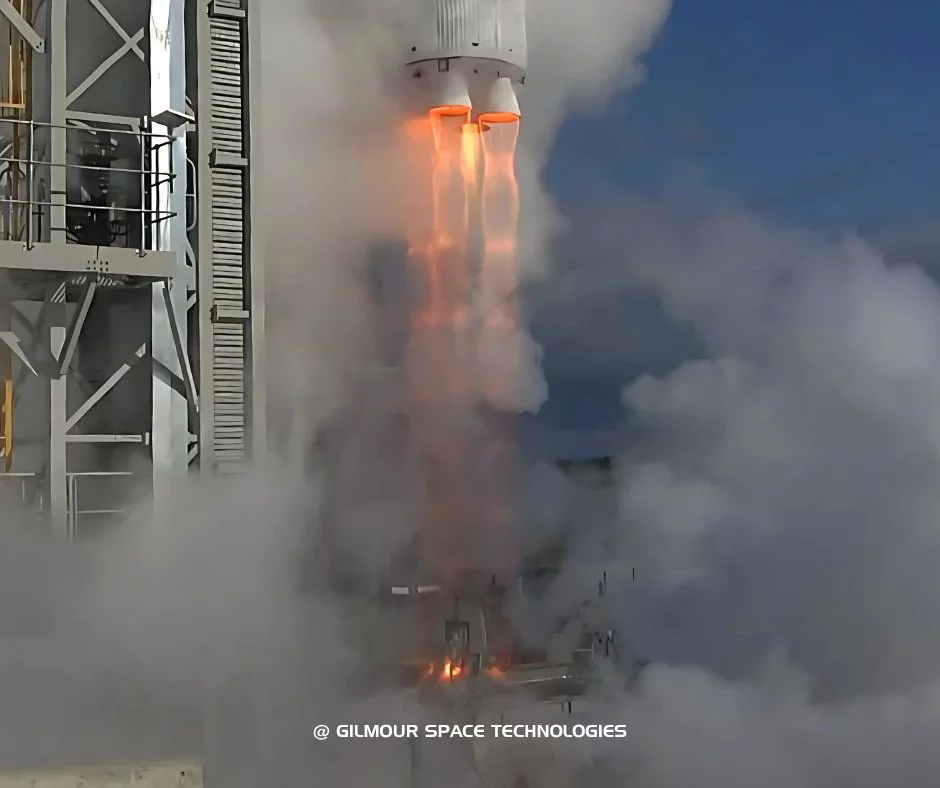In a bit of an oops, Australia’s return to space after almost 54 years hasn’t exactly gone to plan. On July 30, 2025 at the Bowen Orbital Spaceport in North Queensland, Gilmour Space Technologies’ Eris rocket crashed just 14 seconds after launch.
Back in 1971, Australia seemed like it was on the bleeding edge of the Space Race as the Woomera Rocket Range played host to Britain’s launch of its first and only, so far, orbiter rocket, the Black Arrow. Since then, however, Australia has taken an active interest in space and in recent years has turned to developing domestic commercial launch capabilities.
Wednesday’s launch of Eris was supposed to be the country’s return to being a sovereign space power. However, things didn’t quite go to script.
At about 8:35 am AEST, the 75.5-ft (23-m), 30-tonne rocket lifted off from the pad under the power of its Sirius hybrid propulsion system generating 24,729 lb of thrust. Had things gone as planned, this would have been followed by stage separation as the second and third stages, the latter using a Phoenix liquid rocket engine, sent the test payload into orbit.
Eris
This payload would be in itself historic because it is believed to have included just one item – a jar of Vegemite. No word if toast was included.
However, that wasn’t to be. As soon as the rocket cleared the pad something went wrong. It lost power, hovered, slid sideways, then dropped and crashed. In all, a flight time of about 14 seconds. Despite the mishap, Gilmour Space is putting the best face on that it can. In a press release, it described the very, very short mission as a “major milestone” proving Australia’s capability to design, build, and launch its own orbital rockets, with another launch scheduled in six to eight months’ time.

Gilmour Space Technologies
“Space is hard,” said Adam Gilmour, CEO of Gilmour Space Technologies. “SpaceX, Rocket Lab and others needed multiple test flights to reach orbit. We’ve learned a tremendous amount that will go directly into improving our next vehicle, which is already in production.
“Getting off the pad and into flight is a huge step forward for any new rocket program. This was the first real test of our rocket systems, our propulsion technology, and our spaceport – and it proved that much of what we’ve built works.”
Source: Gilmour Space Technologies
